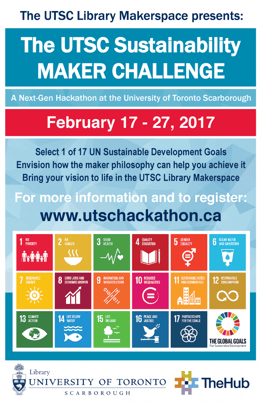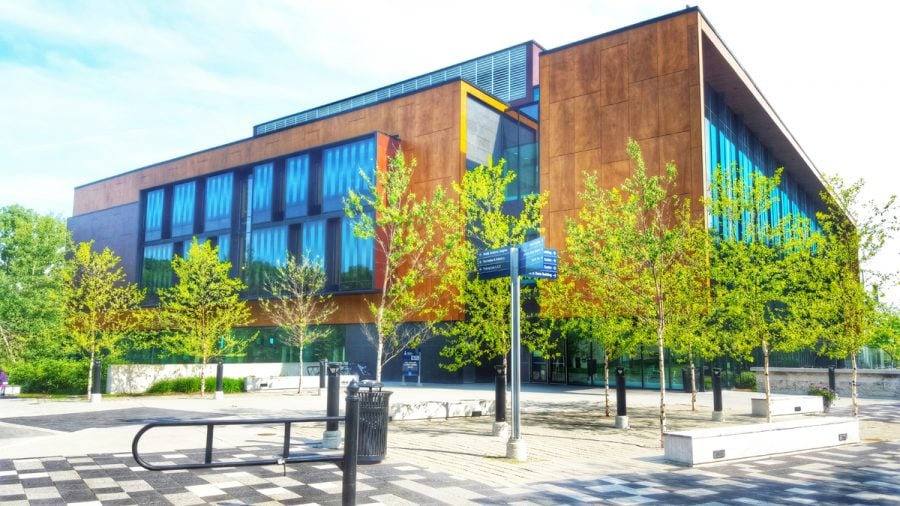University of Toronto, Mississauga Library Science Liaison Librarian Jessica Hanley is our source for this Q&A discussing about outreach methods.
Please tell us about your science background.
Before I became a librarian, I completed a Bachelor of Science in molecular biology and genetics from the University of Guelph. I worked in pharmaceuticals and as a biophysics laboratory technician. The sciences have always been my passion, so I knew when I was working on my Master of Library and Information Science that I wanted to be a librarian within a STEM subject area. For several years, I dreamed of becoming a science librarian in a post-secondary setting.
You succeeded.
In April 2017, I was fortunate enough to reach that goal when I was hired as a science liaison librarian at the University of Toronto, Mississauga campus. My liaison portfolio is large: I currently cover astronomy, biology, biomedical communications, chemistry, earth sciences, medicine, occupational therapy, and physics.
Can you connect all these activities you perform to your outreach approach?
Having a large liaison portfolio has its challenges, but it’s also very rewarding. I knew I needed a solid plan in place to make my outreach as effective and efficient as possible. When I first started my current role, I made it a priority to engage my departments. I connected with the departments’ administrative assistants and asked to meet with department chairs and, if possible, to introduce myself at the next departmental meeting. The next step I took was to ask to sit on departmental curriculum committees. Being a member of two curriculum committees allows me to stay up to date, but also gives me the opportunity to integrate information literacy into the curriculum.
What other kinds of activities are you involved in?
In addition to participating in departmental meetings, I also send out communications to my liaison areas that highlight library services, what’s new with the library, and to remind faculty of the services I can provide to them. Faculty are often surprised about what the library can offer, and they often offer to collaborate.
Besides faculty, you also reach out to students, yes?
While faculty engagement is important, I ensure my outreach to students is a priority. During orientation, I volunteer to spend time at a booth (set up by the library) to speak to students about library services and provide them with my contact information. I have also put together a presentation for student orientation that promotes library services and how I can help. In addition to engaging new students, I conduct regular information literacy sessions, and maintain a presence on many of the courses’ online learning management systems. I wanted to be reachable to students in many different formats, and asking instructors to give me access to their course discussion pages allows me to be more accessible to students who may be hesitant to ask questions in other ways.
This requires some hard work, doesn’t it?
To further reach my STEM students and faculty, I also plan and run Science Literacy Week every September. Science Literacy Week is a great way to build relationships with both students and faculty as they can participate and volunteer in many different types of events. Each year, I reach out to faculty to either do a lecture, a nature walk, or even just play a favorite board game with students. This helps me to build stronger relationships with my STEM departments, but also helps to get them into the library where all the events are held. Last year, one of our events drew over 500 students and faculty to learn about science. I have built a strong relationship with several STEM-related student groups on campus who volunteer every year to run events, do science-focused demos, and help with the week in the library [event]. Our aim is to get students and faculty together to get excited about science, but running this event also allows me to build stronger relationships with both students and faculty while promoting library resources.
You had some prior experience with students, correct?
 Previously, I worked at the U of T Scarborough campus, where I created a new event, a take on a "Hackathon," to better engage students. I partnered with the campus’s sustainability office to collaborate on an event that would get students thinking about sustainability, but also make use and promote the library’s new Makerspace. The result was a 10-day long challenge that brought together industry mentors, library staff, and students. The event had students using the Makerspace, which includes 3-D printers, 3-D scanners, Raspberry Pis, Arduinos, and virtual reality equipment.
Previously, I worked at the U of T Scarborough campus, where I created a new event, a take on a "Hackathon," to better engage students. I partnered with the campus’s sustainability office to collaborate on an event that would get students thinking about sustainability, but also make use and promote the library’s new Makerspace. The result was a 10-day long challenge that brought together industry mentors, library staff, and students. The event had students using the Makerspace, which includes 3-D printers, 3-D scanners, Raspberry Pis, Arduinos, and virtual reality equipment.
This sounds elaborate.
We required that information literacy skills and critical thinking were incorporated into the challenge, and students were tasked with developing a solution to one of the United Nations’ 17 sustainable development goals. They presented their research and an item created using technology provided in the Makerspace. This event was an excellent exercise in outreach, as I called upon my fellow librarians to reach out to their faculty members to participate, recommend students, and attend the showcase of student products. I also connected with my faculty and student groups to participate and promote the event.
What’s coming up in outreach?
This fall I will be adding occupational therapy to my liaison portfolio. I saw this as an excellent opportunity to engage students and faculty at the ground floor, as this program is new to the campus. I reached out to the program chair for a meeting to discuss services I could offer as the librarian. To prepare for the meeting, I contacted a practicing occupational therapist to find out what resources she used (and required) to do her job well. Through interviewing her, I have compiled a research guide of valuable resources that students and faculty can use.
Any lessons learned?
As a liaison librarian with a STEM portfolio, I have found having a plan in place, along with regular communication and involvement with my faculty and students, has helped me to form an ongoing and successful platform for outreach. I always look to grow this knowledge and find more ways to better my outreach. I love to learn best practices from other librarians, to improve my practice and outreach within my field.

